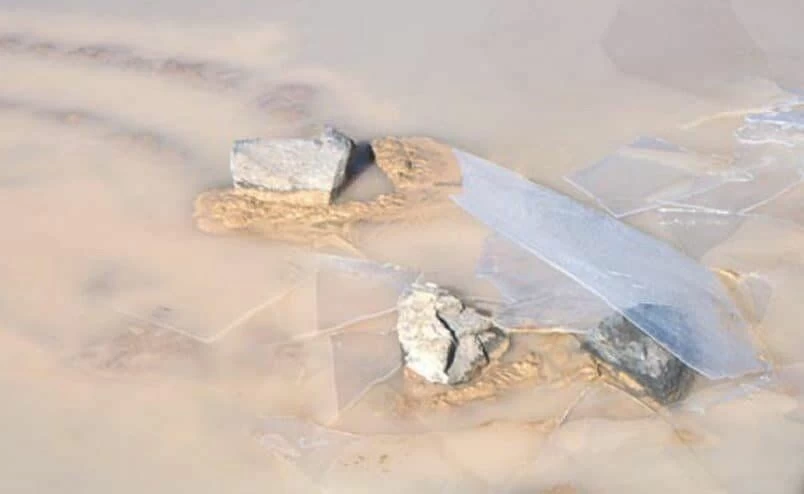Nowadays, we have easy access to information, and the world appears more connected than ever. In this age, the allure of the unknown still captivates our imagination. Mysteries, both old and new, weave through the tapestry of our understanding. Challenging perceptions, inviting exploration. It’s akin to the excitement in online gaming, where platforms like Bet22 offer possibilities and discoveries at every turn. This article, titled “Mysteries Solved: Nature’s Unveiled Lore,” delves into the intriguing world of natural phenomena that have baffled scientists and enthusiasts for centuries, if not centuries. We embark on a journey, much like a game on Bet22, navigating through the enigmatic and perplexing puzzles of our natural world, uncovering the secrets behind some of nature’s most intriguing mysteries. Join us as we explore these fascinating enigmas and the brilliant minds who unraveled them, proving that the thrill of solving a mystery is a timeless pursuit.
Table of Contents
The Strange Moving Stones of Death Valley
For Rogers, the episode on Sailing Stones from season one of Science Solved It was her favorite. “The explanation for that was so complicated and weird,” she says. “… it’s nature being as weird as anything you could come up with.”
The Sailing Stones are found on the Racetrack Playa of Death Valley, a vast, dry lakebed. “They’re these huge chunks of dolomite, a heavy stone,” Rogers says. But the rocks move along the flat desert for no discernible reason. They leave long trails behind them. Some stones have traveled as far as 1,500 feet over many years.
Scientists needed help figuring out what was moving these massive stones for seven decades. In August 2014, a paper in PLOS One revealed it. The paper revealed that two scientists, who were also cousins, caught the rocks in motion.
“What happens is that there has to be this secret sauce of things happening simultaneously,” Rogers explains. “It has to rain a little, so a little water forms in the playa. So there’s a basin of water. And then it has to get cold that night so that that thin water base freezes.”
The following day, it has to melt a little bit. The wind has to blow. Then, all the rocks are caught in this giant sheet of ice that starts to slide over the top of the water. And because the sheet of ice is so massive. When the wind blows, it carries all the rocks along with it.
The Mystery of the Nocturnal Sun
As far back as ancient Rome, people in some parts of the world have recorded a bizarre occurrence in which a bright, atmospheric glow turns night into day. The Romans called it the “nocturnal sun.”
Before artificial light, the phenomenon described by Gordon Shepherd, Ph.D., professor emeritus at York University in Toronto, was more common. “Somebody went out during the night.”They could see their way around and even read a book by it; it was so bright,” he says. These occurrences often happen and only last for two or three nights. On one hand, they are striking, and on the other, they are infrequent, making it an event worth writing about.
Shepherd has never seen a bright night and only knows a handful of people who have. In the early 1990s, he was first informed about them by a French research partner. He was building the Wind Imaging Interferometer or WINDII. It is a satellite instrument to measure atmospheric winds. WINDII also measured airglow intensity.
[Airglow] occurs because, at altitudes of at least 100 kilometers, the atmosphere contains atomic oxygen. “The molecular oxygen, O2, is split into its two atoms by solar, ultraviolet light during the daytime.” As the atoms recombine in the sparse atmosphere, the energy used to separate them is released as light. That light is called Airglow. “According to Shepherd, it’s a constant presence and the reason behind the phenomenon of bright nights.”
Shepherd didn’t exactly set out to solve the mystery of the bright nights. The answer came upon him when he looked at how Airglow moves in waves. “I could not tell you the instance when I finally figured it out,” Shepherd says.
Around a year ago, I believed the waves were constantly moving. So if you think of it, [with] four waves, every so often, the peaks of all four could coincide. So then you’d get a large increase [in Airglow]. And that turned out to be the explanation.”
Shepherd says his discovery made him ecstatic. Epiphany was rare in his previous studies. “I’ve written nearly 300 scientific papers, but they were all pretty much the same… I knew what I was looking for,” he said. “It is satisfying but does not leave a strong impression on you.”This was a different experience.
Even though we know what caused them, don’t expect to see a bright night soon. According to our study, you would see it once a year at a specific location on Earth.”If that night were cloudy, then you’d miss it. Or if there were a full moon, you’d miss it. As far as the modern-day is concerned, it’s a phenomenon that’s vanished with the evolution of our light.”
Final Thoughts
The journey to solve nature’s puzzles shows how curious and clever we are. We’ve figured out mysteries like the moving stones in Death Valley. We’ve also learned about the bright nights that turn dark into day. These discoveries teach us that even though we know a lot, there’s still much to learn about our world. As we solve nature’s secrets, we feed our curiosity and grow our love for our amazing planet. These stories of hardworking scientists finding answers remind us to be curious. We should ask questions and be amazed by the wonders of the Earth.
